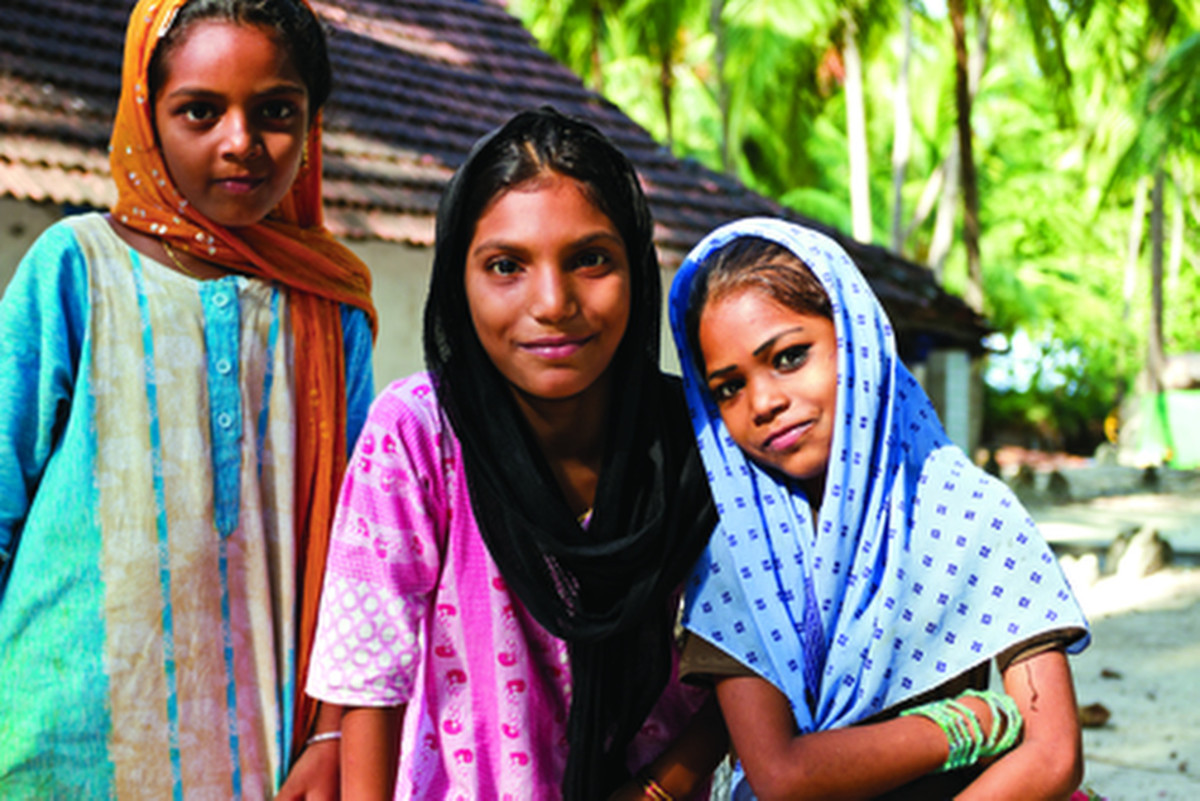Introduction
The intricate interplay between matrilineal kinship systems and Islamic religious norms in Lakshadweep presents a fascinating case study for sociologists and anthropologists. Leela Dube, a prominent Indian sociologist and feminist scholar, extensively studied kinship, gender, and family structures in South Asia, with particular attention to matrilineal societies. Her work on Lakshadweep provides critical insights into how matriliny coexists with Islam, a religion often associated with patrilineal and patriarchal structures. This article explores Dube’s contributions to understanding matriliny in Lakshadweep, the sociological implications of this unique system, and the challenges it faces in a changing socio-religious landscape.

Matriliny: Definition and Features
A social structure known as matriliny is one in which the mother’s line is used to trace descent, inheritance, and family ancestry. Unlike patrilineal systems, where property and social identity pass from father to son, matrilineal societies emphasize the role of women in maintaining kinship ties. Key features of matriliny include:
- Matrilineal Descent: The mother is used to trace family ancestry.
- Matrilocal Residence: Married couples frequently reside with the wife’s relatives or close by.
- Inheritance through Female Line: Property and titles are passed down from mother to daughter or maternal uncle to nephew.
- Women’s Central Role in Social Structure: Women often hold significant authority in domestic and economic matters.
Matrilineal systems are rare globally but exist in some parts of India, such as Kerala (among the Nairs) and Lakshadweep (among the islanders).
Lakshadweep: A Matrilineal Muslim Society
Lakshadweep, an archipelago off the southwestern coast of India, is predominantly Muslim, yet its social organization is traditionally matrilineal. Important sociological problems are brought up by this unusual combination:
- How does matriliny function within an Islamic framework, which generally advocates patrilineal norms?
- What role do women play in a society that is both matrilineal and Muslim?
- How have modernization and religious reform impacted matriliny in Lakshadweep?
In order to answer these concerns, Leela Dube’s work looks at the social, cultural, and religious aspects of Lakshadweep.

The Contribution of Leela Dube to the Matriliny Study in Lakshadweep
Leela Dube’s research on Lakshadweep highlights the adaptability of matrilineal systems within Islamic societies. Her key arguments include:
1. Historical Roots of Matriliny in Lakshadweep
Dube traces the origins of matriliny in Lakshadweep to pre-Islamic times, influenced by maritime trade and cultural exchanges with Kerala’s matrilineal communities. Even after Islamization, the matrilineal system persisted due to its deep-rooted socio-economic functions.
2. Compatibility and Conflict Between Matriliny and Islam
Islam, as practiced in Lakshadweep, has accommodated matrilineal customs to a significant extent. However, tensions arise when Islamic reformers advocate for patrilineal norms in inheritance and family structure. Dube notes that while Islamic law (Sharia) prescribes patrilineal inheritance, local customs (adat) have allowed women to retain property rights.
3. Women’s Agency and Social Status
Dube emphasizes that matriliny grants Lakshadweep women considerable autonomy in household decision-making and property management. Unlike in many patrilineal Muslim societies, women in Lakshadweep are not entirely dependent on male relatives for economic security.
4. Changing Dynamics: Modernization and Religious Reform
Dube observes that modernization, increased education, and exposure to mainstream Islamic practices have led to shifts in kinship patterns. Some families are transitioning toward patrilineal norms, influenced by reformist Islamic movements.
Sociological Analysis of Matriliny and Islam in Lakshadweep
1. Kinship and Social Structure
Matriliny in Lakshadweep organizes social relations around the taravad (matrilineal household), where the eldest male (maternal uncle) manages property but women hold significant domestic authority. This system ensures economic stability for women, as they inherit land and homes.
2. Gender Relations
Unlike in patrilineal Muslim societies, Lakshadweep’s women experience relatively higher status due to:
- Control over household resources.
- Freedom in choosing marital partners (though Islamic norms regulate marriage).
- Absence of dowry, as inheritance is already secured through the female line.
However, Dube cautions against romanticizing matriliny, noting that male authority still exists in public and religious spheres.
3. Religious Syncretism
Lakshadweep’s Islam incorporates local customs, allowing matrilineal practices to coexist with religious obligations. For example:
- While Islamic law mandates that sons inherit twice as much as daughters, local customs often ensure daughters retain ancestral property.
- Marriage and divorce practices blend Islamic principles with matrilineal flexibility.

4. Challenges to Matriliny
Despite its resilience, matriliny in Lakshadweep faces challenges:
- Islamic Reform Movements: Salafi and other reformist groups advocate for stricter adherence to patrilineal Islamic laws.
- Legal Changes: Indian inheritance laws sometimes conflict with traditional matrilineal customs.
- Economic Shifts: Migration and cash economies reduce dependence on ancestral land, weakening matrilineal property systems.
Conclusion: The Future of Matriliny in Lakshadweep
Leela Dube’s work underscores the dynamic nature of matriliny in Lakshadweep, demonstrating how cultural practices adapt to religious and modern influences. While matrilineal traditions have provided women with structural advantages, external pressures threaten their continuity. The case of Lakshadweep offers broader lessons for sociology:
- Cultural Hybridity: Societies can sustain non-normative kinship systems even under dominant religious frameworks.
- Gender and Power: Matriliny does not eliminate patriarchy but redistributes power differently.
- Change and Continuity: Traditional systems evolve but do not disappear entirely.
As Lakshadweep navigates globalization and religious reform, the interplay between matriliny and Islam will remain a crucial area of sociological inquiry. Leela Dube’s contributions provide a foundational understanding of these complexities, urging further research into how marginalized kinship systems persist in changing worlds.
Topic Related Questions
5-Mark Questions (Short Answer)
- Define matriliny and mention two features of matrilineal societies.
- How does Islam influence kinship structures in Lakshadweep?
- What is the role of the taravad in Lakshadweep’s matrilineal system?
- Name two challenges faced by matriliny in Lakshadweep today.
- How does Leela Dube describe women’s status in Lakshadweep’s matrilineal society?
- What is the difference between matrilineal and patrilineal inheritance?
- How has modernization affected matriliny in Lakshadweep?
- Briefly explain the concept of matrilocal residence.
- Why is Lakshadweep’s society considered unique in the Indian context?
- What role does the maternal uncle play in a matrilineal family?
10-Mark Questions (Brief Essay)
- Discuss Leela Dube’s contribution to the study of matriliny in Lakshadweep.
- Explain how matriliny and Islam coexist in Lakshadweep. Provide examples.
- Analyze the changing dynamics of gender roles in Lakshadweep’s matrilineal society.
- Compare the matrilineal systems of Lakshadweep and Kerala (Nairs).
- How does Islamic reform impact traditional matrilineal practices in Lakshadweep?
- Discuss the economic and social significance of matriliny in Lakshadweep.
- What are the advantages and disadvantages of a matrilineal system for women?
- How does the legal system in India interact with Lakshadweep’s customary matrilineal laws?
- Examine the role of religion in shaping kinship structures in Lakshadweep.
- Why is Lakshadweep’s matriliny considered a ‘deviant case’ in Islamic societies?
15-Mark Questions (Long Essay)
- Critically analyze Leela Dube’s perspective on matriliny and Islam in Lakshadweep. How does her work contribute to feminist sociology?
- “Matriliny in Lakshadweep is a resilient but changing system.” Discuss this statement in light of modernization and religious influences.
- Evaluate the impact of Islamic reform movements on the traditional matrilineal structure of Lakshadweep.
- How does the matrilineal system of Lakshadweep challenge conventional notions of patriarchy in Muslim societies?
- Discuss the future of matriliny in Lakshadweep. Will it survive in the face of globalization and religious orthodoxy?
- Compare and contrast the matrilineal systems of Lakshadweep and the Khasi tribe of Meghalaya.
- How does property inheritance work in Lakshadweep’s matrilineal system? Discuss its implications for gender equality.
- “Matriliny does not mean matriarchy.” Explain this statement with reference to Lakshadweep’s society.
- Analyze the role of women in Lakshadweep’s economy and family structure under matriliny.
- How do state policies and legal frameworks affect traditional matrilineal practices in Lakshadweep?
